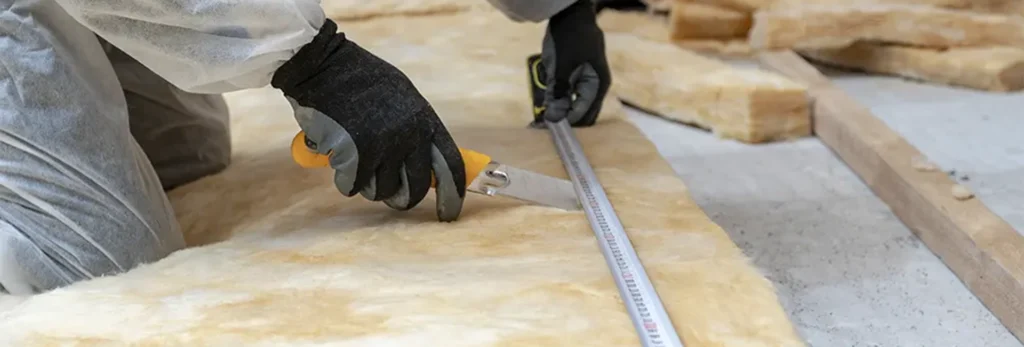When it comes to insulation, each type of residence faces specific challenges, especially when comparing country houses and urban houses. Although the main goal is always the same — to improve comfort and energy efficiency — the materials and insulation techniques can vary depending on the environment in which the house is located.
Each of the materials has unique characteristics that can be adapted to the specific needs of country houses and urban houses. Let’s explore how each material can be used in each scenario and how we can offer the best insulation solution for your home.
Insulation in country houses: Challenges and efficient solutions.
Country houses face a series of unique challenges, such as extreme temperatures, humidity, and the need to maintain a cozy and efficient environment. To address these conditions, it is crucial to choose the right insulation materials.
Challenges:
Extreme temperatures:
Country houses often have to withstand harsh winters and hot summers, meaning that the thermal insulation needs to be able to handle these temperature fluctuations without losing its effectiveness
High humidity:
Humidity in the countryside can be a problem, especially in areas closer to bodies of water. Materials that do not absorb moisture are essential to avoid problems like mold and deterioration.
Rustic structures:
Many rural houses are made with exposed wood or brick, requiring insulation to be applied carefully without compromising the original aesthetics or structure.
Solutions:
Spray Foam:
Spray Foam is an excellent solution for country houses. It forms a high-efficiency thermal barrier that expands when applied, sealing gaps and cracks completely. This helps maintain a stable internal temperature, reducing the need for heating or cooling and making your home more energy-efficient. Additionally, Spray Foam is resistant to moisture, making it ideal for more humid rural environments.
Cellulose:
Cellulose is an excellent option for those seeking a sustainable material. It provides effective thermal insulation and is particularly useful in walls and attics. Furthermore, cellulose is resistant to fire and moisture, making it a safe and efficient choice for rural homes facing high levels of humidity.
Fiberglass Insulation:
Fiberglass insulation is a versatile and economical option. It can be used in walls, attics, and floors, providing an excellent thermal barrier. Although not as resistant to moisture as Spray Foam, it is still a good choice for controlled environments, such as the interior of rural homes that do not face constant humidity.
Insulation in urban houses: Challenges and efficient solutions.
Urban houses face different challenges, such as noise pollution, smaller spaces, and the need for energy efficiency in a dynamic and often more polluted environment. The choice of insulation materials for urban properties needs to prioritize both acoustic comfort and thermal efficiency.
Challenges:
Noise pollution:
In urban areas, the noise from traffic, construction, and commercial activities can be a constant problem. Effective acoustic insulation is essential to create a quiet environment inside the house.
Smaller spaces:
Urban houses often have limited space, meaning that insulation needs to be effective without taking up too much space or compromising the aesthetic of the environment.
Energy efficiency:
Energy expenses in urban areas can be high, especially in regions with extreme climates. Proper insulation is a way to reduce heating and cooling costs, making the house more efficient and sustainable.
Solutions:
Spray Foam:
For urban houses, Spray Foam can be an excellent solution, especially in walls and attics. It not only helps insulate the house thermally but also acts as an acoustic barrier, blocking unwanted noise from the street. Furthermore, due to its expansion during application, Spray Foam fills gaps and cracks that other insulation materials might leave behind, ensuring a quieter and more efficient environment.
Cellulose:
Cellulose is also an excellent option for acoustic insulation. It helps reduce sound transmission, making urban homes quieter and more comfortable. Additionally, it is an eco-friendly and effective choice for thermal insulation, keeping energy costs low throughout the year.
Fiberglass Insulation:
Fiberglass insulation is a common and affordable solution for urban homes. It performs well in both thermal and acoustic insulation, effectively reducing heat and sound transfer. Fiberglass is particularly useful for insulation in walls and floors, where space may be limited, but the need for comfort and efficiency is still high..
Conclusion: Find the best insulation solution for your home.
Whether you live in the countryside or the city, proper insulation is essential to create a comfortable, efficient, and sustainable environment. Spray Foam, Cellulose, and Fiberglass Insulation are three high-performance options, each offering specific benefits depending on the type of house and environmental conditions.
Our company is ready to help you choose the ideal insulation solution for your home, whether it’s in the countryside or the city. Contact us to learn more about how we can improve your home’s energy efficiency and acoustic comfort with the best insulation materials available!

